I spied an odd canvas tote at the Freer Gallery several years ago. It was just black canvas, but the (rather nicely done) print on the front was Philip Evergood’s Dowager in a Wheelchair. (Yes, the name’s not his original one.) The painting is in the Smithsonian American Art Museum, where I’m afraid I still haven’t seen it.
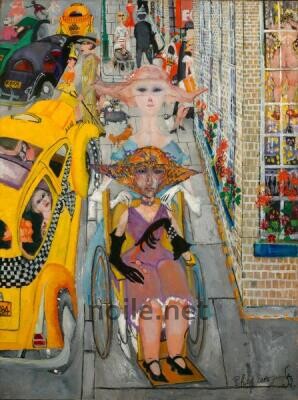
Although Evergood called his inspiration “tragic“, I loved the indomitably of his subject; the (intended) evocation of vulnerability in a privileged person, and the vibrancy of New York life (Evergood says it’s Madison Avenue, and it clearly is the Upper East Side, right?) crashing all around the dowager and her ghostly, younger, attendant.
I didn’t need a tote bag, so I converted it to a backpack so that I could easily transport my Cricket rigid heddle loom.
It’s a simple conversion, really. First, I boxed the corners by stitching a triangle across the side seams, on the inside of the bag. This gave it the right shape so that my loom would slip in easily.
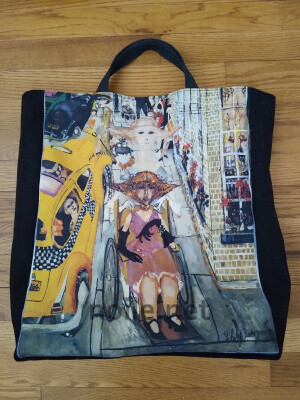
Then, before doing anything else, I sewed four or five grosgrain strips across the bottom of the tote, front to back. Once the conversion was finished, I slipped a custom-cut piece of plastic between these strips and the bottom of the bag.
Really flimsy cutting boards, like those from IKEA, are perfect for bag supports like these, and are easily cut with utility scissors.
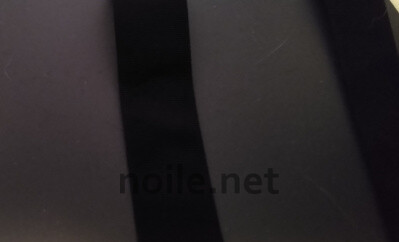
It’s not easy to get a photo of this now that the bag’s finished.
You’re looking at two of the grosgrain strips inside the bag,
and the grey plastic support between the ribbon
and the bottom of the bag
Then, on the back of the tote, I attached a small pocket for a train pass. (You can see it here on the finished bag; it’s located right under where the strap sleeve is attached.) I do this on almost every bag or purse I make or alter. It’s really helpful to be able to grab a transit pass without having to open a bag. This little pocket is hidden under the larger one on the back of the bag.
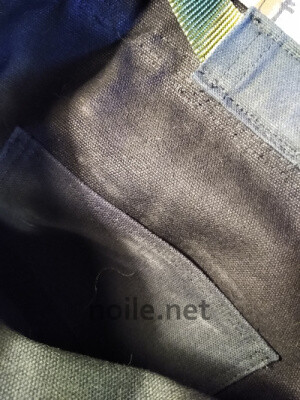
The next step was to cut a large pocket to go across the entire back of the tote, since I knew I’d want to carry easily-accessed magazines or notebooks with me. Before attaching the pocket I measured webbing to my preferred length for the backpack straps, and tucked the attachment rings between the big exterior pocket and the tote. (To make them extra-secure, I stitched them directly to the tote before attaching the pocket. That stitching is hidden, but makes the rings more secure than if they were just held by the stitching around the pocket.)
In the back, at the top of the tote, I added a small sleeve, and ran the webbing through it, for a quick and easy strap installation.

Sewing on the large exterior pocket was tricky, since the tote was pre-made, but was easier than I expected, thanks to my boxed corners, which helped when maneuvering the sides as I stitched around the pocket.
Along the top edge of the tote, I sewed a ripstop cuff with a drawstring, so that the bag can be completely closed. There’s a single cord across the front, another across the back, with cordlock toggles joining them.
The cuff tucks straight down into the bag when not needed, at which point it becomes invisible. Since the backpack straps can theoretically also be quickly removed, this bag can actually resume its previous identity as an ordinary tote, which is kind of amusing, if you’re into multiple identities for your bags.
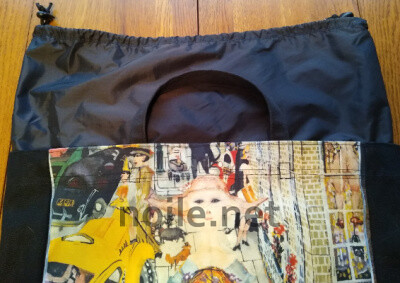
I debated adding internal pockets, but didn’t, since it’s easier to carry my weaving accessories in a plastic box which fits neatly into the gaps made by my loom once it’s in place.
The pockets and sleeve for the backpack straps are made of cotton canvas, like the original tote bag. Naturally, the color match isn’t perfect, but, given the nature of cotton canvas, which wears a bit in use anyway, the slight difference in dye isn’t notable. Not only is my tote bag supremely useful now, but it’s a great pleasure to take Evergood’s dowager out and about all these years after he immortalized her!

Very cool backpack!
Thanks, Carol!